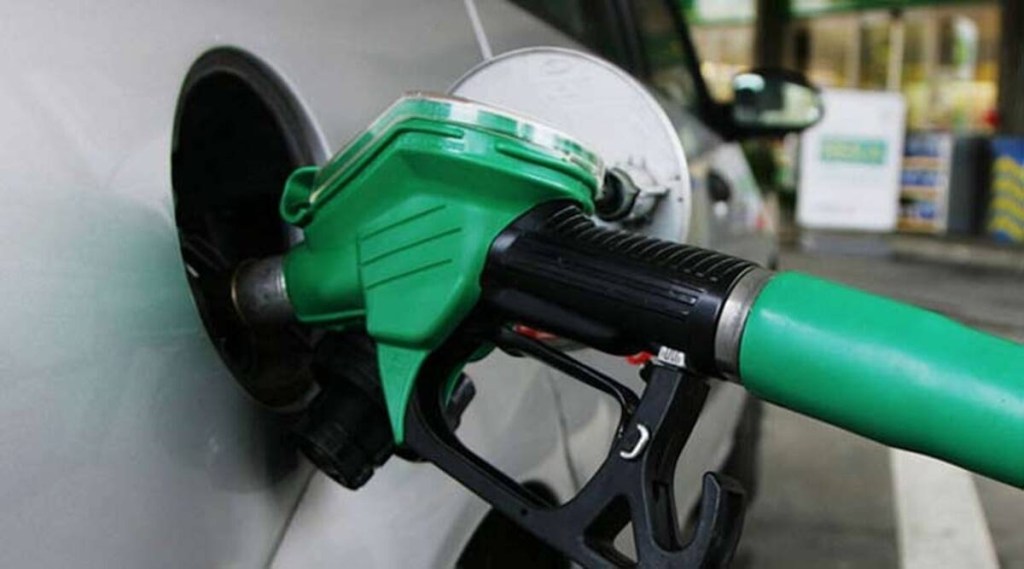By Vikas Srivastava & Yoosef KP
The sharp spike in oil prices on Thursday following reports of Russia’s invasion of Ukraine and the prospect of the prices remaining elevated at over $100 per barrel in the near to medium term leave the Indian government with hard choices: It may have to cut the cesses on diesel and petrol and forgo huge amounts in tax revenue or let the oil marketing companies hike retail prices of auto fuels starting the second week of March (polling for five state assemblies will conclude on March 7) or opt for a judicious combination of the two steps.
Brent crude oil prices rose sharply from the previous close of $96.84/barrel and went past the psychologically important $100-mark and even $105 in intraday trade on Thursday, the highest level since 2014.
By holding the retail fuel prices unchanged since early November, oil marketing companies have suffered significant under-recoveries. The hike in the price of Indian basket of crude by $16/barrel to $99/barrel since early November would have led the retail auto fuel prices to increase by at least Rs 18/litre, if OMCs were not to suffer any under-recoveries.
However, the OMCs, which have retained prices of petrol and diesel at the same levels for over 110 days apparently because of the ongoing assembly elections in five states, are unlikely to fully recoup the resultant under-recoveries. Industry experts expect these state-run firms to hike retail fuel rates by Rs 6-7 per litre in tranches after March 7. They, however, don’t expect India to face any supply impediments as a result of the Russia’s assault on Ukraine as more than 97% of the country’s crude imports are from sources other than Russia. However, the impact on prices and margins will definitely be there unless US relaxes sanctions on Iran and ask its allies to increase production of oil and gas.
“Russian supplies are mere 2-3% of the total imports by India. That too is replaceable and can be easily substituted by crude from other sources,” said R Ramachandran, former director refineries at BPCL. “Indian refiners will see some impact on gross refining margins and increase in inventory losses due to a possible extended period of price rise,” Ramachandran said.
Ajay Arora, head of investment banking advisory at E&Y said, given the global compulsions of balancing the supply and demand, it is unlikely that The US will impose oil and gas sanctions on Russia as the country supplies over 12% of the global oil and around 17% of gas. Any disruption in supplies from Russia will take the crude oil price to even beyond the unthinkable level of $200 level, he noted.
India on average imports around 185-200 million tonne of crude oil per annum, which is around 85% of the crude demand. The Indian basket of crude is currently ruling around $4-5 per barrel lower compared to the spot prices. On Thursday the basket rose to $99 per barrel, up $16/barrel from November 4 level, when the central government cut the excise duty by Rs 10/litre on diesel and by Rs 5/litre of petrol, giving consumers some relief from rising fuel prices.
The options that US has is to persuade its allies to increase the production and relax sanctions on Iran. “Unless this happens there is every likelihood of short-term pressure on crude oil price. “It is likely to hover around $120-125 per barrel,” Arora said.
Hetal Gandhi, director at Crisil Research, wrote: “The (crude) prices could stay over $100 per barrel in the near to medium term unless the Opec decides to increase output materially. Interestingly, over the past three months, Opec members haven’t been meeting their production targets, which has influenced prices.” He added: “The Russia-Ukraine war will have a big bearing on global natural gas markets, since Russia produces roughly 17% of it and has a 25% share of total gas exports. Thankfully, India’s gas requirements are locked in contracts with Qatar, the supply of which is unlikely to be affected if the war doesn’t spill over. However, the impact of higher gas prices would be felt in India, just like everywhere else.”
Sumit Pokharna, V-P at Kotak Securities, says: “The entire cude price hike may not be passed on to Indian consumers. It is expected OMCs will partly absorb the rising costs, while the government may provide excise and/or VAT reliefs. Since companies’ marketing margins are impacted by Rs 2-2.50 per litre, they need to hike the retail petrol diesel prices by at least Rs 6-7 per litre to make up for the losses.” Thankfully, the companies have also seen higher gross refining margins in recent quarters due to higher demand post pandemic and better crack spreads. The refining margins in the Q3FY22 were in the range of $7-10 per barrel. This will help companies to absorb higher crude oil prices in the short term.
If the past precedents of 2017 and 2019 are any indicators then the companies are likely to hike the retail prices again after the end of elections on March 7. There was also a 19-day price freeze ahead of Karnataka polls in May 2018, despite the crude price going up by $5 per barrel. As soon as the polls were over, oil companies increased the reatil prices for 16 straight days. Petrol prices rose by Rs 3.8 per litre and diesel by Rs 3.38 per litre during the period.
